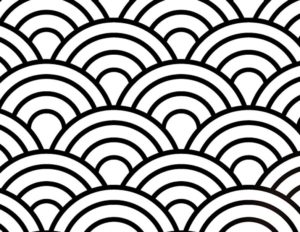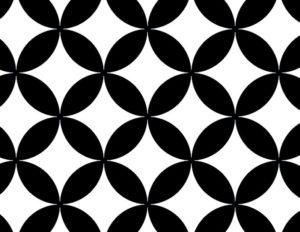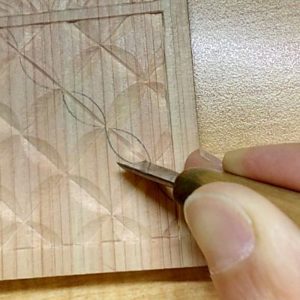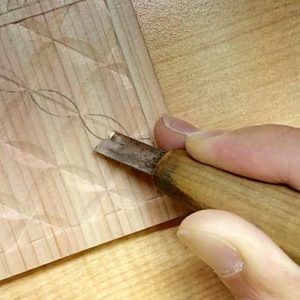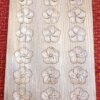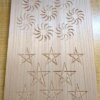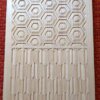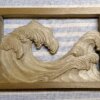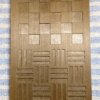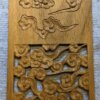How to carve patterns Part4 ~Seigaiha and Shippo-Tsunagi ~
In this tutorial, we’ll explore how to carve two elegant and flowing patterns:
-
Seigaiha (Blue Ocean Waves)
-
Shippo-Tsunagi (Seven Treasures / Interlinked Circles)
Unlike previous patterns where we mostly used triangular, flat, and sharp chisels, this time we’ll make good use of a shallow round chisel, which is ideal for smooth curves.
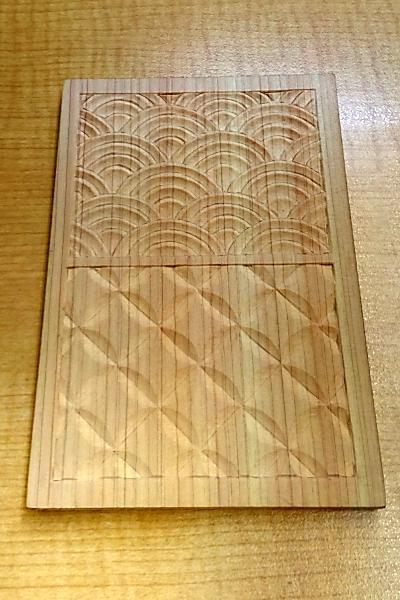
Preparation
Use carbon paper to trace the Seigaiha and Shippo-Tsunagi designs onto a postcard-sized wooden board.
You can download the sketches from here: [PDF of Seigaiha and Shippo Tsunagi].
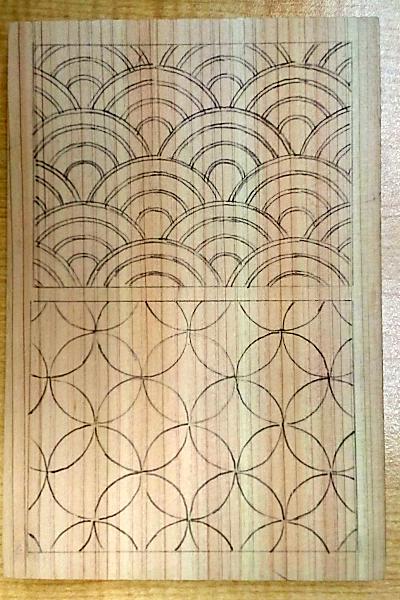
1. How to Carve Seigaiha (Blue Ocean Waves)
Step 1
Use a triangular chisel to carve the areas above the black lines in the sketch.
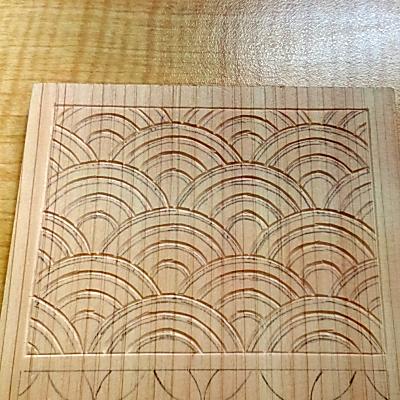
Step 2
Next, use a sharp chisel to make incisions at both ends of the lines.
Carve a little deeper toward the tips.
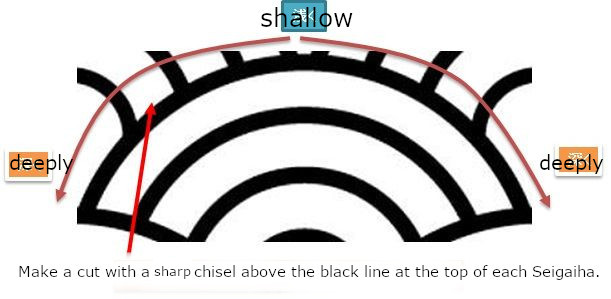
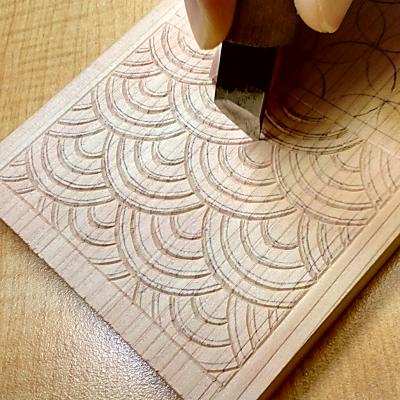
Step 3
Use a flat chisel to carve a slope that intersects with the points where you made the incisions.
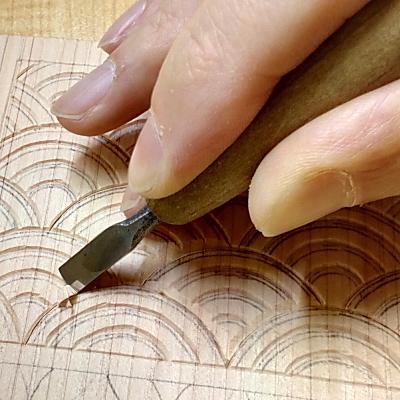
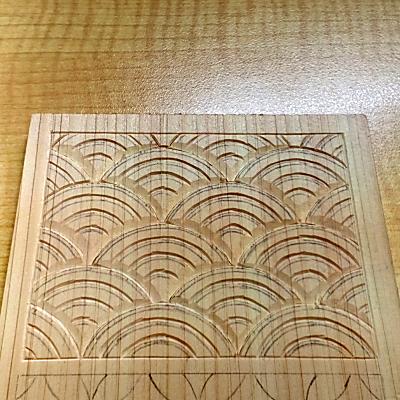
Once you’ve carved the slopes, the surface should start to show subtle height differences between wave segments.
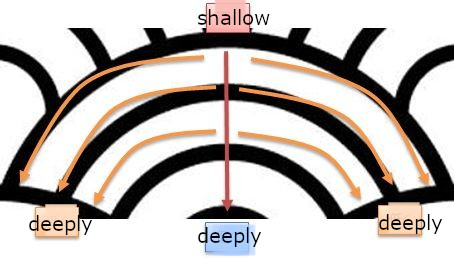
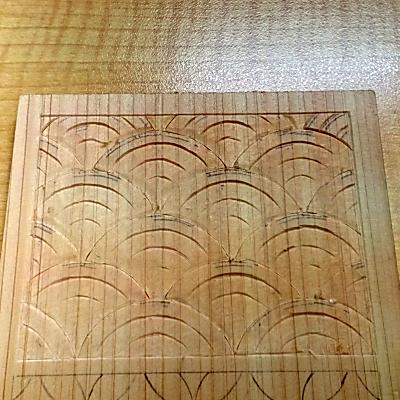
Step 4
Some lines may have become faint, so re-carve the outlines with the triangular chisel.
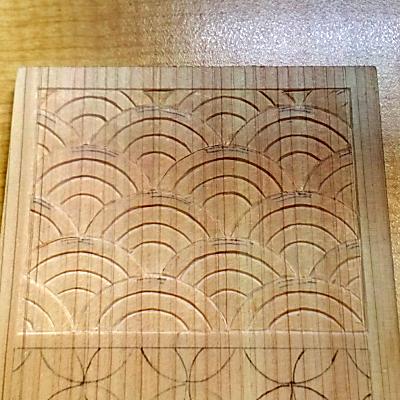
Step 5
Use a shallow round chisel to carve the curves of the waves.
Work slowly and carefully, ensuring the waves are smooth and not uneven.
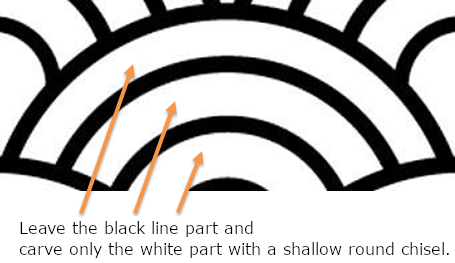
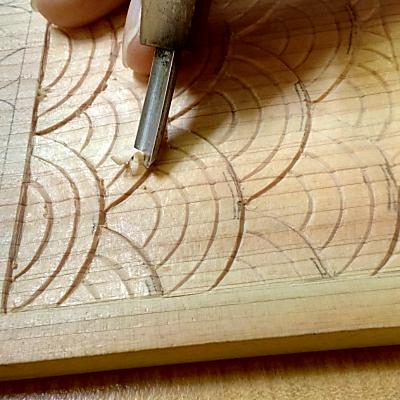
Final Touch
Use a combination of tools—flat chisel, sharp chisel, shallow round chisel, and triangular chisel—to clean up the carving.
Remove any rough edges or uncut areas for a polished finish.
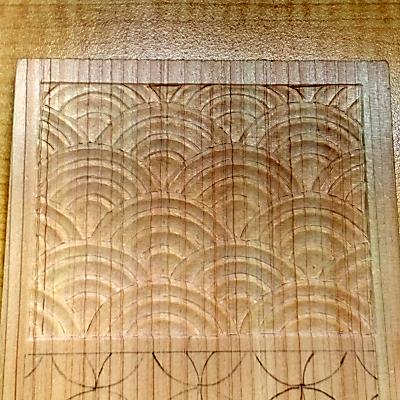
2.How to Carve Shippo-Tsunagi (Seven Treasures Pattern)
Step 1
Start by using a triangular chisel to carve lines that connect the intersection points of the overlapping circles.
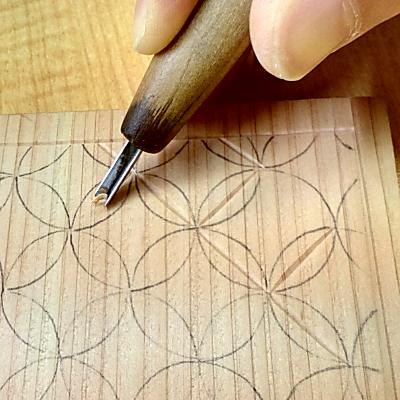
Step 2
Use a shallow round chisel to carve elongated semi-circular shapes, starting from the line-carved areas.
Adjust the horizontal angle of the chisel to change the thickness of the lines:
-
To carve thin lines, hold the chisel more upright (obtuse horizontal angle).
-
To carve thick lines, hold it flatter (sharper horizontal angle).
Step 3
As with Seigaiha, ensure that the curved surfaces are even and smooth when you're done.
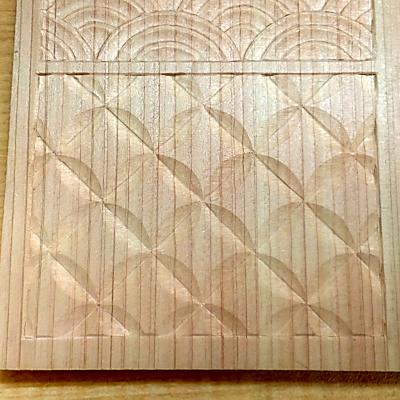
How to carve patterns
- From the lattice to the scales
- Raimon
- Asanoha and Sayagata
- Seigaiha and Sippo-Tsunagi ←Current page displayed
- Higaki and Kumikikko
- Mimasu-Tsunagi and Mimasu-Chirashi
- Ryusui
- Bundo-Tsunagi and Tatewaku
- Yamajimon and Misujidate
- Kemanmon and Gobosei
- Chidori and Chidori-Goshi
- Nejiume (Twisted plum)
- Kikubishi and Yaegiku
- Ichimatsu and Sankuzushi
- Kikko and Yagasuri
- Clouds
- Waves

